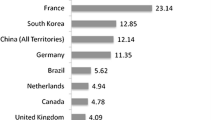Abstract
The quality perceived by the user, a concept known as Quality of user Experience (QoE), is gaining momentum. Together with the efforts of providing appropriate architectures able to deliver the expected level of Quality of Service (QoS), users’ perception of the level of quality could play a key role in making a VoIP multimedia application to succeed or to fail. QoE can be measured from different approaches; subjective ones are based on polls while objective ones are mainly based on QoS network performance parameters. Although a subjective evaluation could be costly and time consuming, it gives the most accurate results. Moreover, wireless environments incorporate new challenges in terms of QoS and QoE because of inherent wireless communication characteristics. In this way, our contribution is twofold. First, we carry out a subjective QoE assessment for VoIP applications in a real wireless environment. Skype, Gizmo5, ooVoo, and Damaka are the selected VoIP applications under study. Next, we contrast QoE results with QoS evaluation from the captured video calls made during the poll. Results show that there is no precise match on both assessments, because of QoE parameters that cannot be inferred from QoS analysis, because of the different effect of some QoS parameters which prevail, or even because of the popularity of the VoIP application.
Similar content being viewed by others
References
Blake, S., Black, D., Carlson, M., Davies, E., Wang, Z., & Weiss, W. (1998). An architecture for differentiated services. RFC 2475.
Grossman, D. (2002). New terminology and clarifications for diffServ. RFC 3260.
Braden, R., Clark, D., & Shenker, S. (1994). Integrated services in the internet architecture: an overview. RFC 1633.
Rosen, E., Viswanathan, A., & Callon, R. (2001). Multiprotocol label switching architecture. RFC 3031.
ITU-T. Recommendation P.800.1 (2006). Mean opinion score terminology. http://www.itu.int/.
ITU-T. Recommendation P.800 (1996). Methods for subjective determination of transmission quality. http://www.itu.int/.
ITU-T. Recommendation P.910 (1999). Subjective video quality assessment methods for multimedia applications. http://www.itu.int/.
ITU-T Recommendation P.920 (2000). Interactive test methods for audiovisual communications. http://www.itu.int/.
ITU-T Recommendation P.862 (2001). Perceptual evaluation of speech quality (PESQ): an objective method for end-to-end speech quality assessment of narrowband telephone networks and speech codecs. http://www.itu.int/.
Varela, M., Marsh, I., & Grönvall, B. (2006). A systematic study of PESQ’s behavior (from a networking perspective). In Proceedings of Measurement of Speech and Audio Quality in Networks (MESAQIN ’06) (pp. 1–11).
Pennock, S. (2002). Accuracy of the perceptual evaluation of speech quality (PESQ) algorithm. In Proceedings of Measurement of Speech and Audio Quality in Networks (MESAQIN ’02).
ITU-T Recommendation G.107 (2005). The E-model, a computational model for use in transmission planning. http://www.itu.int/.
ITU-T Recommendation P.563 (2004). Single-ended method for objective speech quality assessment in narrow-band telephony applications. http://www.itu.int/.
ANSI (2006). Auditory non-intrusive quality estimation plus (ANIQUE+) perceptual model for NON-intrusive estimation of narrowband speech quality. http://www.ansi.org/.
Kim, D.-S., & Tarraf, A. (2007). ANIQUE+: A new American national standard for non-intrusive estimation of narrowband speech quality. Bell Labs Technical Journal, 12(1), 231–236.
Malfait, L., Berger, J., & Kastner, M. (2006). P.563—the ITU-T standard for single-ended speech quality assessment. IEEE Transactions on Audio, Speech, and Language Processing, 14(6), 1924–1934.
Calyam, P., Ekici, E., Lee, C.-G., Haffner, M., & Howes, N. (2007). A “GAP-Model” based framework for online VVoIP QoE measurement. Journal of Communications and Networks, 9(4), 446–456.
Tao, S., Apostolopoulus, J., & Guerin, R. (2008). Real time monitoring of video quality in IP networks. IEEE/ACM Transactions on Networking, 16(5), 1052–1065.
Rubino, G., & Varela, M. (2004). A new approach for the prediction of end-to-end performance of multimedia streams. In Proceedings of the First International Conference on Quantitative Evaluation of Systems (QEST’04) (pp. 110–119).
Perala, P., & Varela, M. (2007). Some experiences with VoIP over converging networks. In Proceedings Measurement of Speech, Audio and Video Transmission Quality in Telecommunication Networks MESAQIN’07 (pp. 1–7).
Skype. http://www.skype.com.
TeleGeography (2006). International carriers’ traffic grows despite Skype popularity. TeleGeography Report and Database. Available at http://www.telegeography.com.
Bonfiglio, D., Mellia, M., Meo, M., Ritacca, N., & Rossi, D. (2008). Tracking down Skype traffic. In Proceedings of IEEE Infocom’08 (pp. 261–265).
Gizmo5. http://www.gizmo5.com.
Damaka. http://www.damaka.com.
ooVoo. http://www.oovoo.com.
Andersen, S., Duric, A., Astrom, H., Hagen, R., Kleijn, W., & Linden, J. (2004). Internet low bit rate codec (iLBC). IETF RFC 3951.
Global IP Solutions. http://www.gipscorps.com.
ITU-T (2007). Recommendation G.729. http://www.itu.int.
On2 web site. http://www.on2.com.
ITU-T (1993). Recommendation G.711. http://www.itu.int.
Lindblom, J. (2005). Sinusoidal voice over packet coder tailored for the frame-erasure channel. IEEE Transactions on Speech and Audio Processing, 13(5), 787–798.
Bonfiglio, D., Mellia, M., Meo, M., & Rossi, D. (2009). Detailed analysis of Skype traffic. IEEE Transactions on Multimedia, 11(1), 117–127.
Fitzek, F., & Reisslein, M. (2001). MPEG-4 and H.263 video traces for network performance evaluation. IEEE Network, 15(6), 40–54.
Rossi, D., Mellia, M., & Meo, M. (2009). Understanding Skype signaling. Computer Networks, 53, 130–140.
Wireshark. http://www.wireshark.org.
Robbins, A. (2000). Effective AWK programming: a user’s guide for Gnu AWK. iUniverse. Bloomington, IN.
Author information
Authors and Affiliations
Corresponding author
Rights and permissions
About this article
Cite this article
Cano, MD., Cerdan, F. Subjective QoE analysis of VoIP applications in a wireless campus environment. Telecommun Syst 49, 5–15 (2012). https://doi.org/10.1007/s11235-010-9348-5
Published:
Issue Date:
DOI: https://doi.org/10.1007/s11235-010-9348-5




